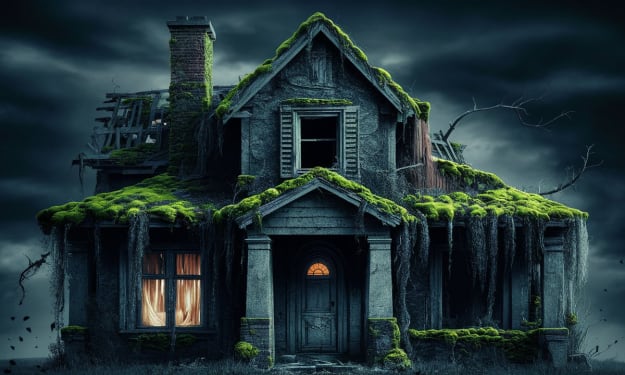The origin of mermaids
Exploring the Rich Tapestry of Mermaid Lore Across Cultures and Centuries

The origin of mermaids can be traced back through centuries of mythology and folklore, captivating the imaginations of people worldwide. These enchanting creatures, often depicted as half-human and half-fish, have emerged in diverse cultural narratives, each with its own unique interpretations and stories. Exploring the origins of mermaids takes us on a fascinating journey across time and continents.
One of the earliest depictions of mermaid-like creatures dates back to ancient Mesopotamia, around 3,000 BCE. In Babylonian mythology, the goddess Atargatis was believed to transform into a mermaid as an expression of her grief and shame. The concept of a divine being associating with water and taking on aquatic features laid a foundation for the mermaid archetype.
Greek mythology also played a significant role in shaping mermaid lore. The sirens, often associated with the sea, were half-woman and half-bird creatures. These seductive beings possessed captivating voices and enchanted songs that lured unsuspecting sailors to their doom. Although not explicitly mermaids, the sirens' allure and their association with the sea contributed to the broader concept of captivating aquatic beings.
In Norse mythology, the "selkie" or "seal wife" appears as a creature that could transform from a seal into a beautiful woman by shedding its skin. These beings often inhabited the waters of the North Atlantic and were known for their mesmerizing presence. The selkies exemplify the connection between humans and marine creatures, blurring the boundaries between the two worlds.
European folklore offers some of the most iconic portrayals of mermaids. Depicted as beautiful and mysterious creatures, mermaids were believed to possess the upper body of a woman and the tail of a fish. These enchanting beings were often associated with bodies of water such as lakes, rivers, and the vast ocean. Legends told tales of mermaids rescuing drowning sailors, granting wishes, or foretelling future events. Yet, they were also feared for their seductive nature, which could lead to disaster and death.
The concept of mermaids permeated many cultures around the world. In East Asian folklore, the Japanese "ningyo" emerged as fascinating water spirits. Ningyo were depicted as fish-like creatures with the heads of monkeys or humans. They were believed to possess magical properties and were sometimes associated with longevity or good fortune. Their stories often served as cautionary tales, warning against the dangers of greed or overindulgence.
Mermaid legends continue to evolve through the ages, adapting to different cultural perspectives and artistic expressions. They have inspired countless works of literature, art, and popular culture. Hans Christian Andersen's fairy tale "The Little Mermaid" brought the mermaid archetype into the mainstream, capturing the hearts of readers with its poignant and bittersweet narrative. This tale, along with other adaptations, helped solidify the image of mermaids as creatures longing for a connection to the human world.
Modern interpretations of mermaids reflect a wide array of cultural influences and personal creativity. Mermaids have become symbolic figures, representing themes of transformation, femininity, and the mysterious depths of the sea. They embody the allure of the unknown and the yearning for connection with a realm beyond our reach.
These enchanting beings continue to captivate our imagination, reminding us of the timeless allure and mystery of the sea.The origin of mermaids can be traced back to various mythologies and folklore from different cultures around the world. The concept of half-human, half-fish creatures has appeared in stories and legends throughout history. Here are a few examples:
- Ancient Mesopotamia: One of the earliest known depictions of mermaid-like creatures comes from ancient Mesopotamia (modern-day Iraq) around 3,000 BCE. In Babylonian mythology, there is a goddess named Atargatis, who was believed to transform into a mermaid out of grief and shame.
- Greek Mythology: In Greek mythology, there were various sea nymphs and creatures associated with the sea. The most famous is perhaps the story of the sirens, who were half-woman and half-bird creatures, known for their enchanting songs that lured sailors to their doom.
- Norse Mythology: In Norse mythology, there is a creature called the "selkie" or "seal wife." These beings were believed to be seals in the water but could shed their skins to transform into beautiful women on land.
- European Folklore: In European folklore, mermaids are often depicted as alluring creatures with the upper body of a woman and the tail of a fish. They were said to possess enchanting voices and would often be found near bodies of water, such as lakes or the ocean.
- East Asian Mythology: In East Asian cultures, similar water spirits are found. For example, in Japanese folklore, there are creatures called "ningyo," which are often depicted as fish-like beings with the heads of monkeys or humans.
About the Creator
Yulianto Arif
I am an article writer and content creator on youtube short, as well as a thesis writer in my country.






Comments
There are no comments for this story
Be the first to respond and start the conversation.